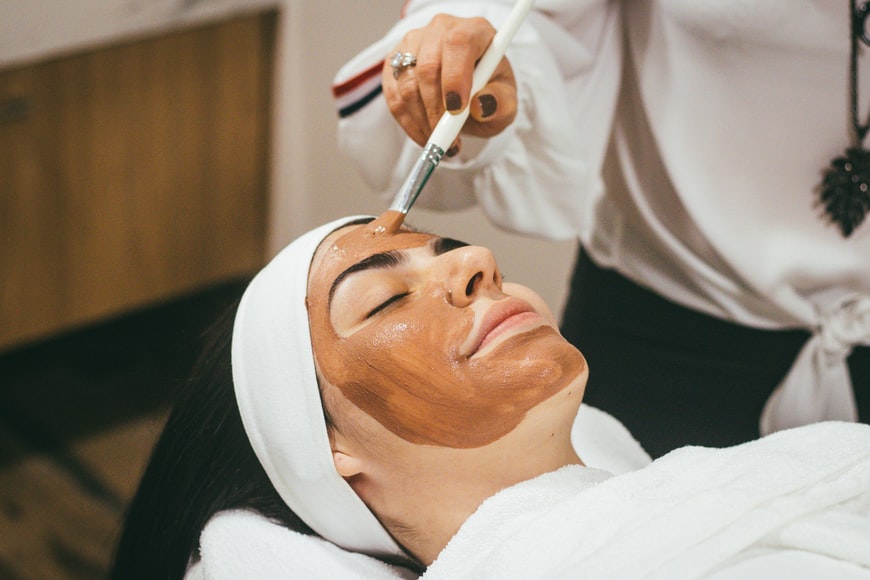You’re not alone if you have oily skin and can’t seem to fend off acne breakouts. Oily skin is prone to breakouts, as the skin produces an excess of sebum (an oily substance produced by your glands), leading to clogs and infections. That doesn’t mean you’re destined for a life of acne, though. You can use certain products to prevent acne and enjoy your skin again.
1. Top-Notch Astringent
An astringent is one of those skincare products that isn’t as commonly talked about as cleansers and moisturizers, but it’s a secret weapon for oily skin to prevent acne — and it shouldn’t be overlooked.
An astringent is a substance that removes excess oil, dirt, and other debris that may have been left behind after cleansing. As a bonus, it shrinks pores and tightens your skin — two significant advantages for those with oily, acne-prone skin types.
When choosing an astringent, look for ingredients that will do the job, such as alcohol, citric acid, or salicylic acid. Apply the astringent to a cotton pad or ball and give your face a good wipe-down. You’ll be shocked at what’s removed from your pores.
2. Good Cleanser
Skincare 101 involves washing your face with a good cleanser at least once daily. But with oily, acne-prone skin, choosing the right cleanser is more crucial than ever.
The right cleanser, will be non-comedogenic and gentle, such as the Fresh Soy face wash or Dermatica balancing glycerin gel cleanser.It won’t block your pores and encourage breakouts, and it is non-acnegenic, meaning it won’t worsen existing pimples. It also won’t cause irritation or allergies, which can lead to further breakouts.
Foam, gel, clay, and powder cleansers work best for oily skin types.
Here’s a pro tip: wash your face with your preferred cleanser every morning and night to remove excess oil, dirt, dry skin cells, and other debris that can lead to breakouts. Washing after exercise is also a good idea to remove pore-clogging sweat.
3. Oil-Free Moisturizer
If you struggle with oily and blemish-prone skin, you might think “absolutely not” when it comes to applying a moisturizer. After all, your face looks and feels more than well-hydrated, so a moisturizer will only encourage breakouts further, right? Not necessarily.
This may come as a surprise, but oily skin does not equate to moisturized skin. In fact, oily skin can be dry underneath all of that oil, which will eventually lead to unwanted side effects like redness, inflammation, fine lines, and wrinkles.
To make sure your skin is getting essential moisture without clogging your pores, it’s critical to purchase a moisturizer that’s 100% oil-free, Facetheory sell one for under $20. Apply it to your face after washing with your face wash.
Mandy at Mama Mandy’s Mercantile says “I used to have major issues with oily skin. We started to create our own tallow cream at our home and it worked wonders on my skin after a few applications. Ladies, give tallow face and body cream a shot when you get a chance.”
4. Chemical Exfoliating Scrub
Exfoliants are used regularly, but not daily, to help remove dead skin cells, unclog pores, and improve skin texture. It also works to promote cell turnover, leading to a flawless complexion. Needless to say, they can be a gem for those dealing with oily skin riddled with acne.
However, like any other skincare product you choose, you need to be picky about your exfoliant. There are two types: physical and chemical. The chemical option is best for oily, acne-prone skin types, as it doesn’t contain abrasive particles that can worsen your condition. Look for chemical exfoliants with salicylic acid or glycolic acid, like Paula’s Choice Skin Perfecting Lotion Exfoliant.
Stick to exfoliating your skin two or three times weekly. Over-exfoliating will strip your skin’s natural oils, causing irritation and encouraging oil production—precisely what you’re trying to avoid. When you’re finished exfoliating, it is critical to moisturize to keep your skin healthy, hydrated, and happy.
What To Avoid
A good routine for oily, blemish-prone skin includes a good cleanser, astringent, moisturizer, and exfoliant. These will work wonders at reducing breakouts and greasiness, leaving you with the skin of your dreams. However, just as there are many skincare products you should use, there are just as many things you should avoid, such as:
- Touching Your Face: Your hands are loaded with dirt, oil, and other debris that can easily be transferred to your face when you touch it. As you may assume, this can lead to further outbreaks. Refrain from touching your face. When you need to, thoroughly cleanse your hands first.
- Popping Your Pimples: While popping pimples may be tempting and even enjoyable for some, it’s a recipe for disaster. Interfering with your pimples can worsen inflammation and leave unsightly scars and dark spots.
- Overwashing: Regularly cleansing your oily skin is a must, but too much of a good thing can become bad. Overwashing will strip your skin’s natural oils, causing irritation and an increase in oil production.
- Sleeping with Makeup On: Leaving makeup on your face overnight will lead to clogged pores in the morning. Always cleanse your face and use an astringent to remove all makeup particles from your pores.
Wave Acne Goodbye
There’s no denying that oily skin is the ideal canvas for acne breakouts, but you can be proactive about halting outbreaks with preventative measures. The best thing to do is cleanse your face at least two times a day with a top-notch product, like the soy face wash, use an astringent to remove any leftover oil and debris and use moisturizer regularly. Exfoliating a few times weekly can also manage symptoms and leave you with picture-perfect skin.




